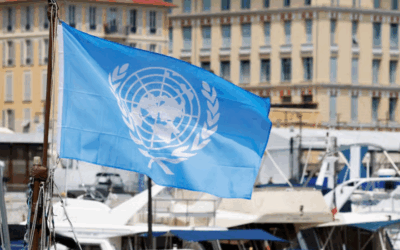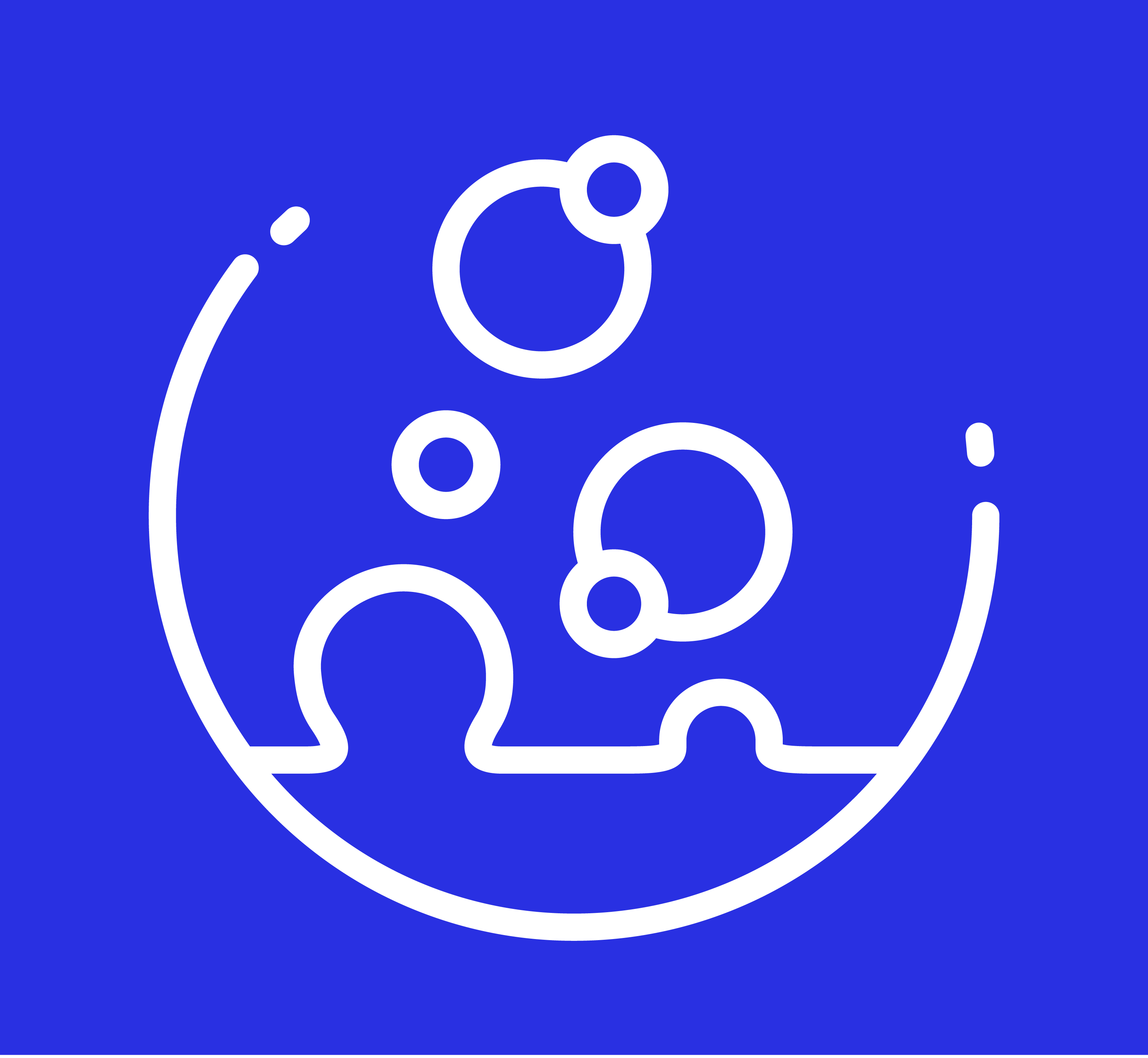Plastic pollution is a major threat to our waterways, affecting ecosystems and human health. Tackling this problem requires creative and collaborative solutions. Meet 7 organisations tackling plastic pollution in our rivers and canals.
By Jacqueline Haitz
1. Seabin
Seabin, a clean-tech startup, developed an innovative solution to tackle waterway pollution. This maritime trashcan filters plastic debris from water using an electric underwater pumping system, processing up to 55,000 litres per hour [1]. It traps plastic debris before releasing clean water back into marinas or harbours.
The system collects one plastic item every six seconds and runs 24/7. So far it has been installed in marinas and harbours across Australia, including Sydney Harbour. Over the past year, it has collected over 120 tonnes of marine litter at Sydney Harbour alone [2].
Seabin also advances plastic pollution research by analysing collected data. The Seabin Foundation was established to tackle maritime plastic litter through research. They created the world’s first portable ocean health data lab in Sydney. Here, scientists collect data and input it into a global database, later used for educational purposes.

2. Noria Sustainable Innovators
Noria Sustainable Innovators, a Dutch start-up, developed the CirCleaner system to address pollution in fast-moving waters, such as rivers, canals, and pumping stations. The CirCleaner features a 3.5-meter wheel with five blades that rotate against the water current, collecting floating litter. It can catch plastic debris as small as 1 mm [3]. The system operates on shore power, with plans to transition to hydropower. Enclosed in a plastic shell to prevent odours, the CirCleaner has been shown to remove 95% of floating plastic [4].
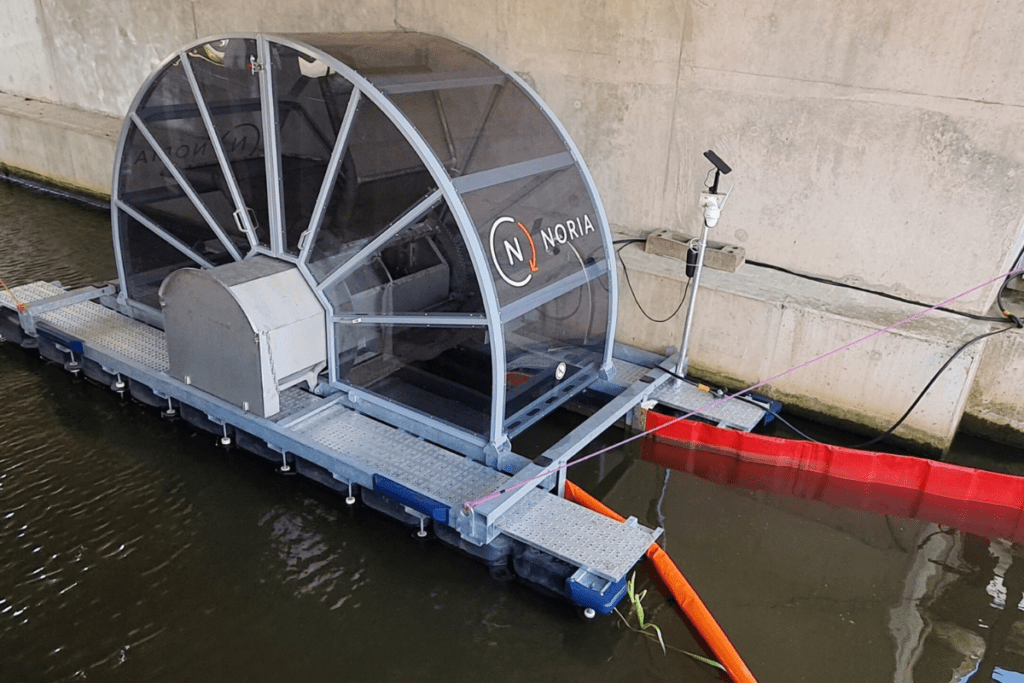
3. RAN Marine
RAN Marine aims to protect aquatic ecosystems with autonomous water drones. The company developed three autonomous surface vehicles (ASVs) called “Sharks,” inspired by whale sharks that filter tiny organisms from the water [5].
These ASVs clean waterways by swimming through them and collecting plastic debris with a large opening in their centre. One of these ASVs, the Waste Shark, can reach places waste management vessels have trouble reaching. It can be guided automatically or remotely with a remote control and can collect up to 500 kg of plastic debris daily, all while operating emission-free [6].
The Sharks are low maintenance, budget-friendly, and can work in all weather conditions. Powered by renewable energy, Sharks ensure zero carbon emissions.
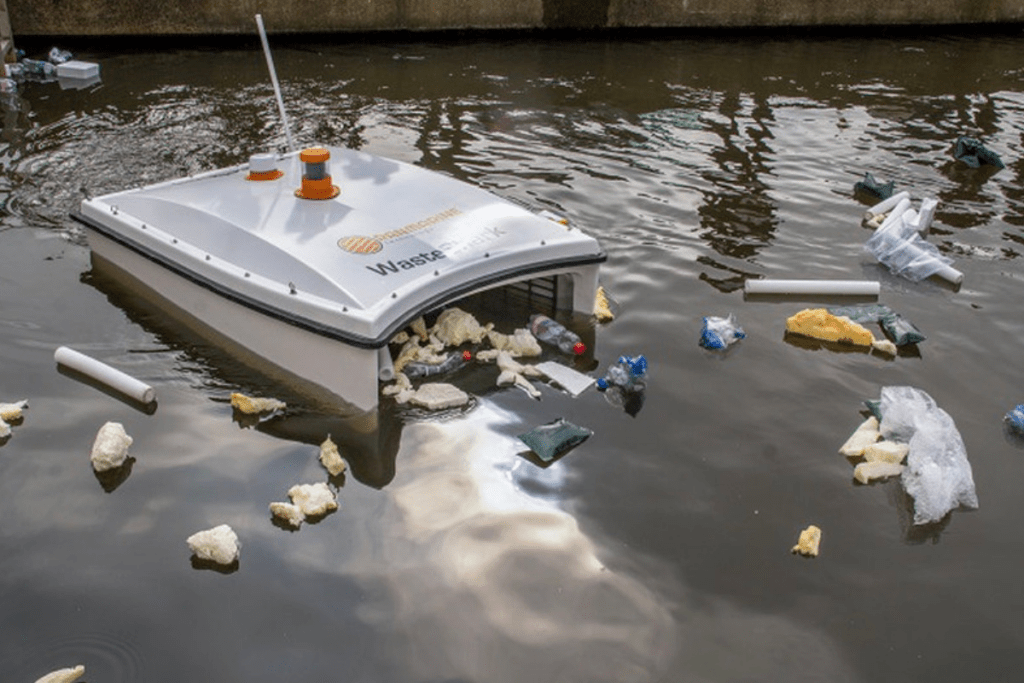
4. Sungai Watch
Sungai Watch, a non-profit organisation in Indonesia, tackles waterway pollution with a straightforward approach: installing trash barriers to catch plastic debris on the water’s surface. River barriers are cleaned daily by the Sungai Cleanup Warriors. With 270 floating barriers installed across Indonesia’s rivers, the organisation prevents plastic from reaching the ocean [7]. The Cleanup Warriors have collected over 2,150,000 kg of plastic and cleaned 360 rivers [8].
Together with its sister company, Sungai Design, Sungai Watch contributes to a circular economy by creating sustainable design pieces from recycled materials.
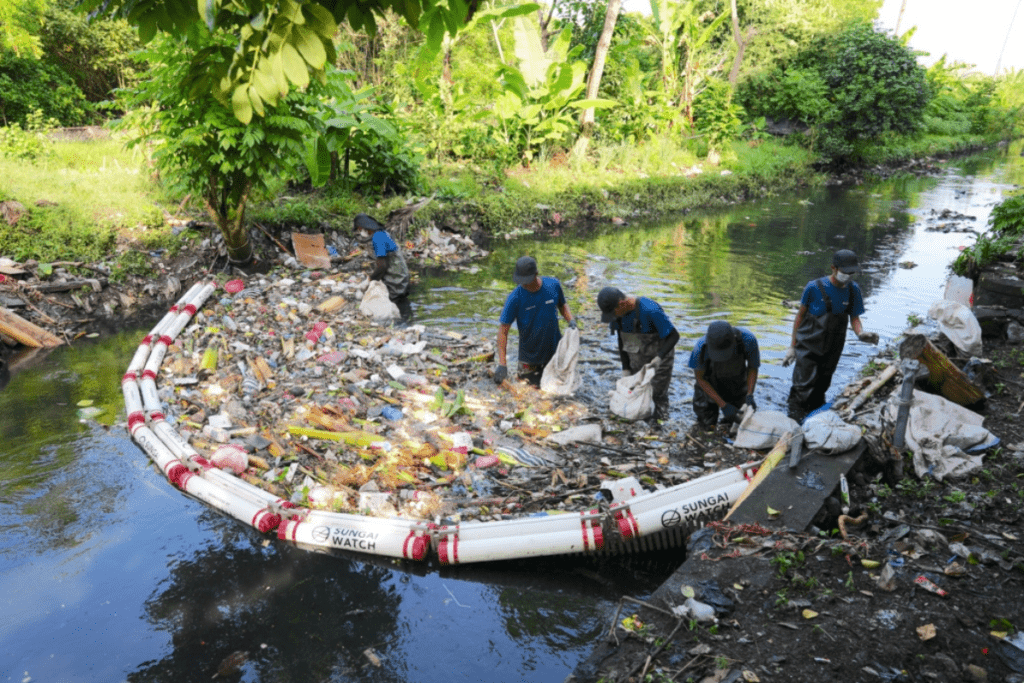
5. The Ocean Cleanup
The Ocean Cleanup aims to remove about 90% of floating ocean plastic pollution by 2040 [9]. The non-profit developed sustainable interceptor systems to halt riverine pollution.
The company invented an automatic, solar-powered floating device catching trash called the Interceptor Original. The Interceptor Barriers collect floating plastic debris and redirect it on board the Interceptor Original.
From there, the collected trash is distributed across six dumpsters to store up to 50m³ of waste [10].
The Ocean Cleanup has deployed its interceptors all across the world, from Malaysia to the United States of America. The project has also contributed to cleaning the Great Pacific Garbage Patch.

6. Plastic Fischer
Plastic Fischer is a Germany-based social enterprise that deploys TrashBooms in rivers across the globe to capture plastic. As an organisation, they focus on creating social and environmental impact simultaneously. Their clean-up technology is Locally-Built, Low-Tech, and Low-Cost, making clean rivers accessible to an array of locations. Plastic Fischer does not only design and install their TrashBooms but is also responsible for creating over 80 full-time local jobs.[11]
Currently, they offer three different types of cleaning technologies. First, a regular TrashBoom, that is self-aligning, and modular, with a passive collection, where the collected plastic is later retrieved manually. Second, a Walkable TrashBoom, suitable for hard-to-access places because it offers a stable platform to walk and do the initial sorting and drying of the catch. Third, Lifting Mechanisms, which is a designed crane system that can remove large quantities of plastic in a short time for highly polluted locations. [12]
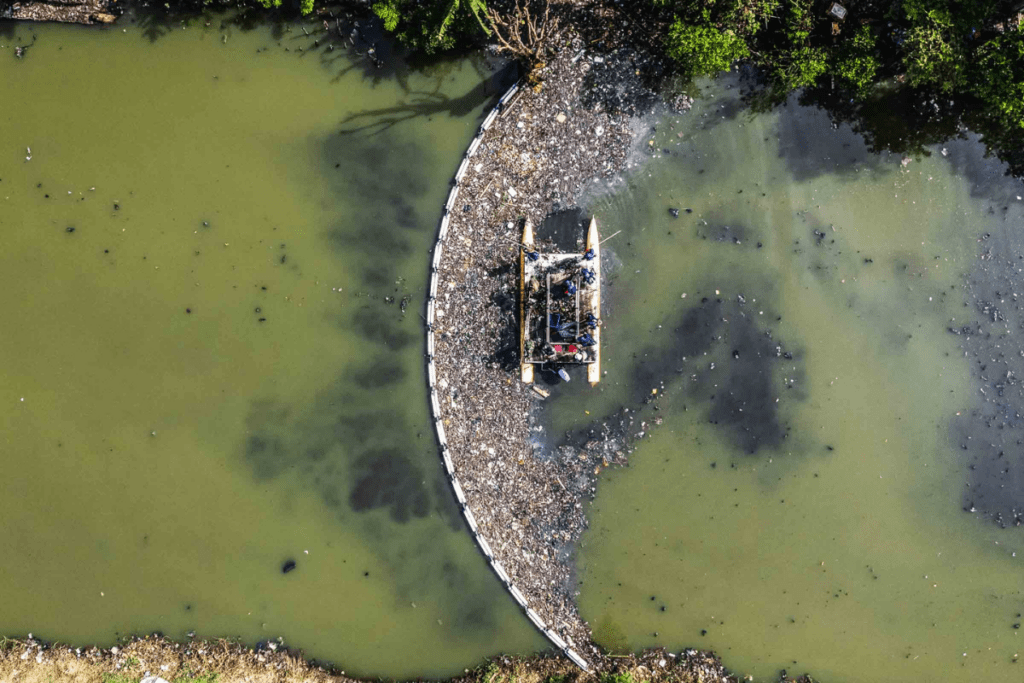
7. The Great Bubble Barrier
The Great Bubble Barrier is a Dutch social enterprise, founded in 2017, which developed an effective technology to stop plastic pollution in rivers before it flows into our oceans, using bubbles.
A bubble curtain is created by pumping air through a perforated tube on the bottom of the waterway. The bubble curtain creates an upward current which directs plastic to the surface. By placing the Bubble Barrier diagonally across the river, the natural flow of the water will push the plastic waste to the side and into the catchment system. The Bubble Barrier can effectively catch 86% of floating plastic without hindering the passage of ships or marine life [13].
The first long-term Bubble Barrier was installed in Amsterdam (Netherlands) in 2019, followed by Katwijk (Netherlands), Vila do Conde (Portugal) and Harlingen (Netherlands).
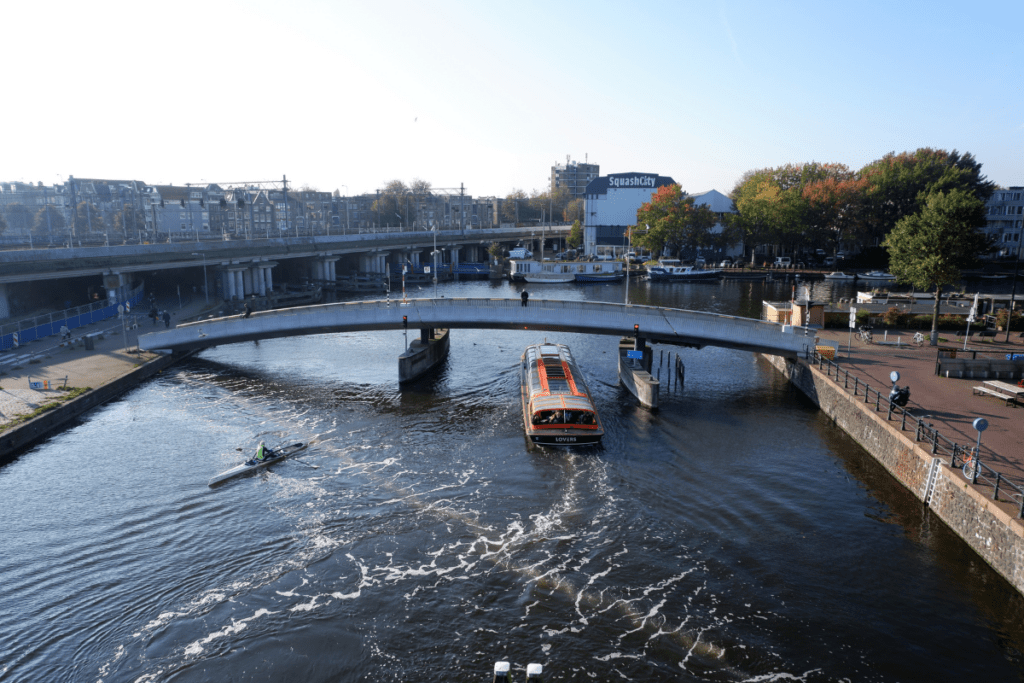
References
[1] Seabin Project (n.d.), How it works, available at https://seabin.io/how
[2] Seabin Project (n.d.), How it works, available at https://seabin.io/how
[3] Noria (n.d.), Circleaner, available at https://www.noria.earth/circleaner/
[4] Noria (n.d.), Our Mission, available at https://www.noria.earth/
[5] RanMarine (n.d.), Our Products, available at https://www.ranmarine.io/our-products/
[6] RanMarine (n.d.), WasteShark, available at https://www.ranmarine.io/products/wasteshark/
[7] Sungai Watch (n.d.), Sungai Design, available at https://sungaidesign.com/
[8] Sungai Watch (n.d.), Impact, available at https://sungaidesign.com/pages/impact
[9] The Ocean Cleanup (n.d.), Interceptor Original, available at https://theoceancleanup.com/rivers/interceptor-original/
[10] The Ocean Cleanup (n.d.), Interceptor Original, available at https://theoceancleanup.com/rivers/interceptor-original/
[11] Plastic Fischer (n.d.), Plastic Fischer Solution, available at https://plasticfischer.com/en/pages/solution
[12] Plastic Fischer (n.d.), Plastic Fischer Solution, available at https://plasticfischer.com/en/pages/solution
[13] The Great Bubble Barrier (n.d.), Fish and Bubble Barriers, available at https://thegreatbubblebarrier.com/technology/

